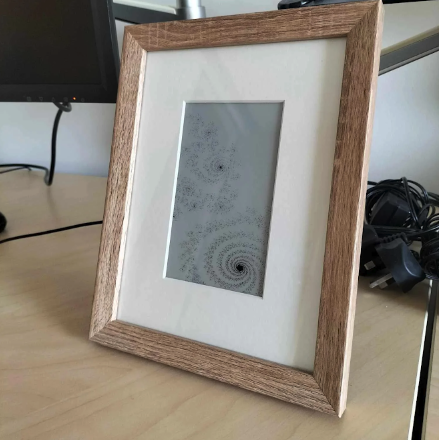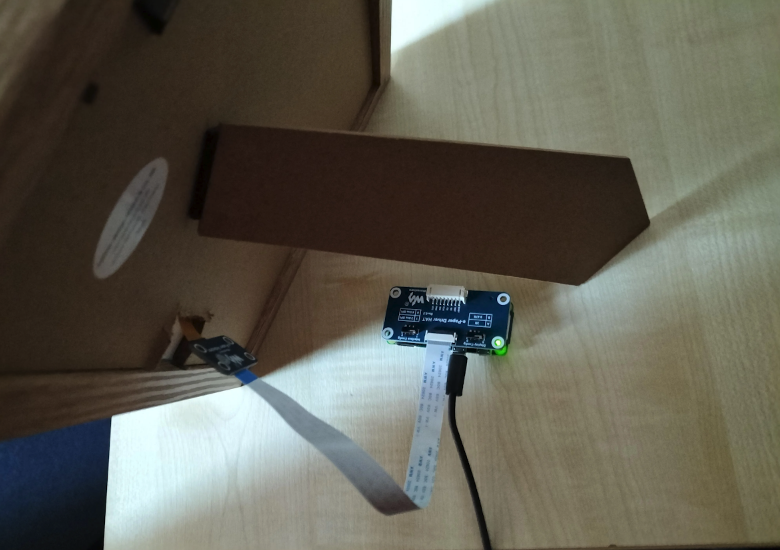What are fractals?
Fractals are shapes that contain complex detail however closely you look at them, or however far you zoom in. Often, they are self-similar: if you zoom in on the small-scale detail, you find it resembles the overall shape. Some of the most familiar forms that have fractal features are ones found in nature, like fern leaves and frost patterns, and we bet we’re not the only ones who call Romanesco “fractal cauliflowers”.
They are also beautiful. Fractal art can be created algorithmically by software, with the results usually represented as still digital images or animations. It all kicked off in the mid-1980s, so it’s the kind of thing that’s likely to be right up our street.
The maker kept the assembly pretty simple, cutting a small hole in the picture frame’s back mount panel to slip the display HAT’s ribbon cable through, with the project’s Raspberry Pi left free-floating behind it. The e-ink display itself fits snugly inside the frame, with a card mount providing a little breathing space between the display and the glass.
Software setup
Getting the software going looks to be as elegantly easy as the hardware. All the code you need is on GitHub, including a step-by-step guide in the README. It generates part of a Mandelbrot set with dimensions to suit the e-paper screen, then renders it for display.
Fellow maker Rob Weber has added extra code to the GitHub repository from the Omni-EPD project. The additional code allows for more electronic display types to be used.
We’re not going to get into what the Mandelbrot set is, but Jimi Sol in this here video seems to do a great job of explaining.
“I bought the panel from the Waveshare Amazon store,” says Karl. “For the 7.5 in Waveshare panel, I’d recommend getting an 18×24 cm frame [like this one].” Karl also ordered a custom frame from Best4Frames: “I ordered mine around 15×9.7 cm, which is one of the smallest cutouts they can make.”
“The picture mount is good for aesthetics,” explains Karl alongside offering “extra protection.” A small slit on the side of the back panel of the frame allows access to the ribbon cable. “I attached it to the header which comes with the Waveshare panel, and which goes directly on [Raspberry] Pi Zero.
“Those of you who are more gifted in building might be able to come up with an enclosure, but in my build Raspberry Pi is free‑floating,” says Karl.




